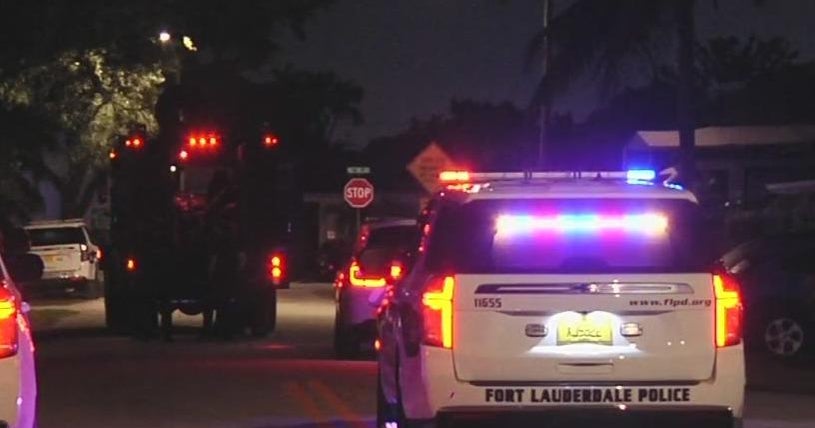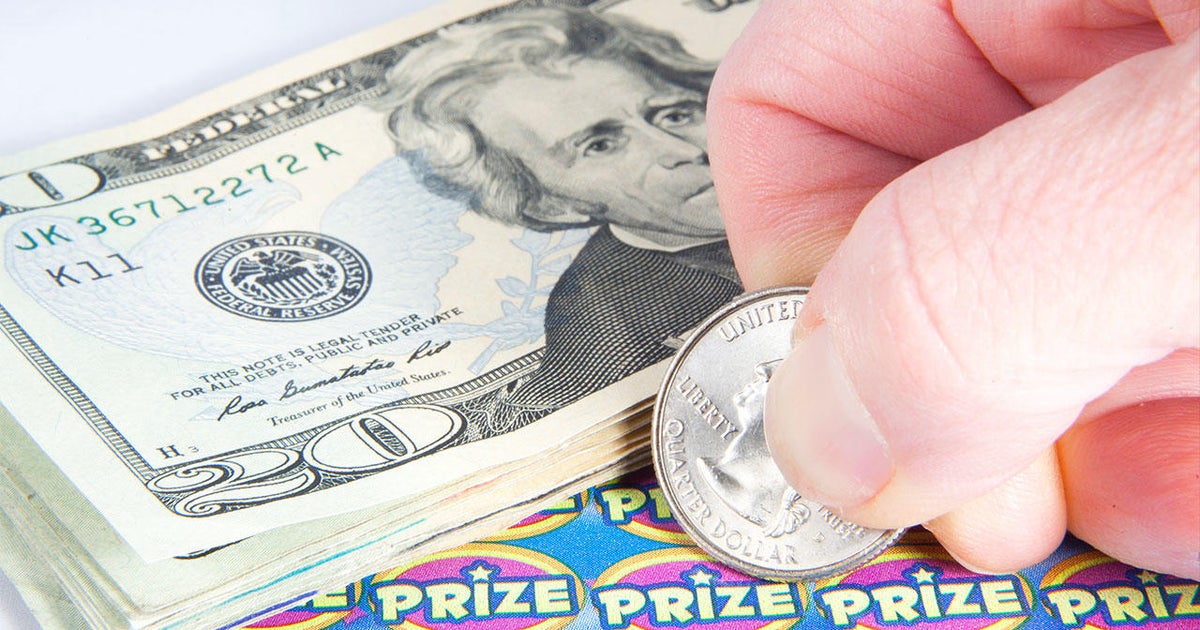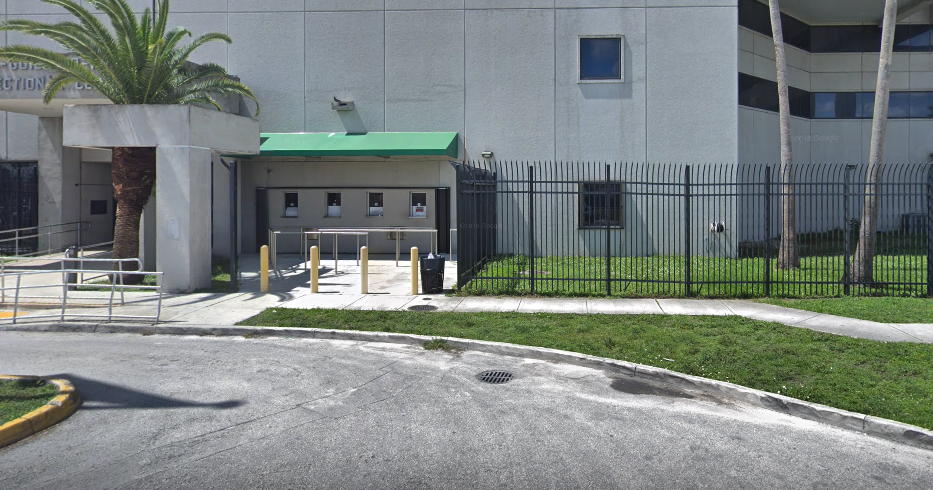Exclusive: JFK Assassination Witness Speaks For 1st Time
DALLAS (CBSMiami) – When President John Fitzgerald Kennedy was cut down by an assassin, a chain of events began that included the murder of a police officer, the capture of the alleged presidential assassin, and the murder of the assassin.
In the 50 years since the Kennedy assassination, one Dallas Police officer who was in the middle of the chaos that enveloped the city in the hours and days that followed the murder has never shared his story about what he saw, heard and did. Until now.
For the first time ever, R.C. Nelson, retired from the Dallas Police, talked exclusively to CBSMiami.com about the pandemonium that came after the assassin's bullets rang out in Dallas. Nelson has never spoken about the events, even to the Warren Commission.
On November 22, 1963, Nelson was working out of the southwest substation in Dallas. He said that police were spread all over the city guarding multiple areas.
"Only two people were working the south district," Nelson said, "my partner J.D. Tippit and me. Tippit was working the entire Oak Cliff section."
On a normal day, Nelson estimated there would have been 10-12 squads covering the area.
Nelson said he was across the viaduct from the Texas Book Depository when he heard the shots ring out in the cold Dallas air. The police dispatch was almost immediately on the air with reports of shots fired.
What Nelson heard was the shots that would forever change American history. President Kennedy, riding through Dealey Plaza in Dallas was shot along with Texas Governor John Connolly. Kennedy was fatally wounded by a second shot after the initial shot appeared to go through his neck.
Nelson said he was on the scene within two minutes and when he arrived, people were still on the ground and screaming. Nelson asked a motorman when he got to the scene what had happened?
"Somebody shot and killed Kennedy," Nelson recalled the "motor jockey" (motor patrolman) saying. "He was up there (pointing to book depository). I saw the rifle in the window when I looked up." Nelson said the motorman then said, "I saw Kennedy's head blown off."
Nelson contacted an inspector to ask what to do and his superior told him to just be in the area.
It wasn't long after the assassination of President Kennedy that a second call came across the Dallas Police dispatch radio, this time of an officer shot in Oak Cliff. The officer, J.D. Tippit, was Nelson's partner on "night shifts and deep night shifts," but the two were not paired together on November 22.
Officer Tippit was described by Nelson as a, "nice, east Texas guy who loved his family and worked hard and did what he was supposed to do, but wasn't very curious. He liked to write his tickets and go home. He had a bad habit of not looking at you when he was talking to you."
Nelson said he had actually talked to Officer Tippit before the fateful day in Dallas about his partner's tendency toward avoiding eye contact with subjects.
Official reports said that Officer Tippit pulled over Lee Harvey Oswald based on a description that was broadcast over the Dallas Police radio. Oswald then murdered Tippit before leaving the scene of the murder.
Nelson said he believed that Oswald actually flagged Officer Tippit down because he "can't imagine Tippit pulling him (Oswald) over and saying "come here."
"I think he (Oswald) was amazed that he wasn't arrested after the shooting," Nelson recalled. "The book depository was covered with cops and he walks out! He didn't appear to have a plan. He couldn't go home. So he hails a cab and then gets on a bus."
Another aspect of Nelson's belief that Tippit didn't seek out Oswald was that Tippit didn't secure or guard his pistol and the first shot hit the officer in the temple, suggesting Tippitt was looking away.
Oswald shot Tippit on 10th Street in Dallas and Nelson and several others went to a library a block away.
"While we were preparing to go into the library, we heard someone had gone into the Texas (movie) theater without paying," Nelson said. "It was about three blocks away and we converged on the Texas theater."
Nelson said he first went to the back entrance, but then that went to the front of the theater and entered the lobby.
Three police officers, Nick McDonald, C.T. Walker, and Charles Harrison were bringing Oswald into the lobby.
"Apparently, Oswald hit McDonald, then pulled a gun on him and one of the other (cops) knocked the gun away," Nelson recalled. "That's when McDonald punched Oswald. Both of them had bumps on their heads. I watched as Oswald came out of the theater in handcuffs."
But that's not where Nelson's brush with history, or the story of Oswald ended.
Two days after the assassination of Kennedy and with an entire nation in mourning, Nelson was assigned to the basement's main door entrance from city hall. Oswald was scheduled to be moved from city hall to the county jail and he was being moved through the basement.
Nelson said all of the television cameras, which broadcast the transfer and what happened in the basement, entered through the door where he was standing guard.
As Oswald was moving through the basement, Nelson was approximately 20 feet away when he heard a shot ring out and then chaos. Chicago businessman Jack Ruby had gotten into the basement and shot Oswald with a .38 revolver.
Nelson said Ruby was bent over and he heard someone yell, "Get his gun."
"I grabbed for his hands and didn't find a gun," Nelson said. "But I managed to manhandle him into the basement jail house office and handcuffed him."
Ruby reportedly said, "It's me, it's Jack," right after he fired the fatal shot at Oswald. Ruby knew several Dallas Police officers, but Nelson said he was not familiar with him.
What hasn't been shared before is what Nelson said happened just before the shooting and then in the immediate aftermath.
According to Nelson, right before Oswald was brought to the basement, a Dallas Police decoy car was brought to the basement and plain clothes cops were put inside the car to distract the media from the real transfer vehicle.
The decoy car drove up the north ramp, which Nelson said was actually the entry ramp to the basement.
"They drove up the north ramp which was actually the entry ramp into the basement and drove around the block," Nelson said.
Nelson said the lieutenant driving the decoy car came walking back through his area after parking in the basement again. Nelson said he was positive that Ruby had not passed him to get into the basement.
According to Nelson, Lieutenant Sam Pierce said Ruby walked right by the decoy car and walked down the north ramp into the basement. Shortly after the shooting, however, Nelson was told Dallas Chief of Police Jesse Curry wanted to see him.
When Nelson got to Chief Curry's office, he saw Lieutenant Pierce was already in the office. The chief told Nelson, "R.C., this isn't going to be held against you with all the TV cameras that were coming into the basement."
Nelson thought Chief Curry was implying that Ruby had gotten past him. Nelson said he told the chief that, "You can tell them anything you want, but Ruby didn't come by me!"
In the days that followed, Officer Tippit would be laid to rest and when Nelson saw his former partner's wife to try to comfort her was hard.
"The first time I had contact with her; it was tough," Nelson recalled. "You've got a partner and you see his wife and kid at his funeral. (Choking up) It was pretty tough."
Over the next year, the Warren Commission investigated the assassination of President Kennedy and the murder of Lee Harvey Oswald. Despite his being right in the middle of the historical events, Nelson said he was never called to testify.
"I thought it was kind of strange, because all during the Warren Commission hearings, no one knew how Ruby got into the basement," Nelson said.
As the decades have gone by, Nelson said he's had a chance to talk about the events, but said he didn't "feel like talking about it."
"Several authors contacted me and I just didn't feel like it," Nelson said. "But lately, many of my family members have tried to get me to tell my story."
R.C. also said that some authors have even alleged that he was "involved in the conspiracy."
"I wasn't," Nelson said. "I want my family to have something recorded so my great-grand kids will know the real facts."
It's been 50 years a cold and sunny November day in 1963 became such a nightmare that tens of millions of Americans can still tell you exactly where they were when they heard the news. For R.C. Nelson, the memories of the day Camelot died are still crystal clear.
(Disclosure: R.C. Nelson is the brother of CBS4 News' Gary Nelson)



